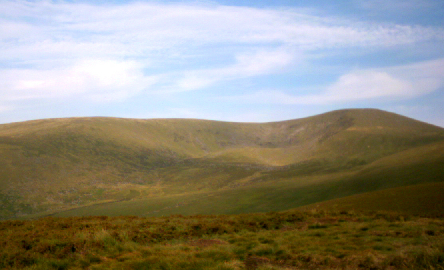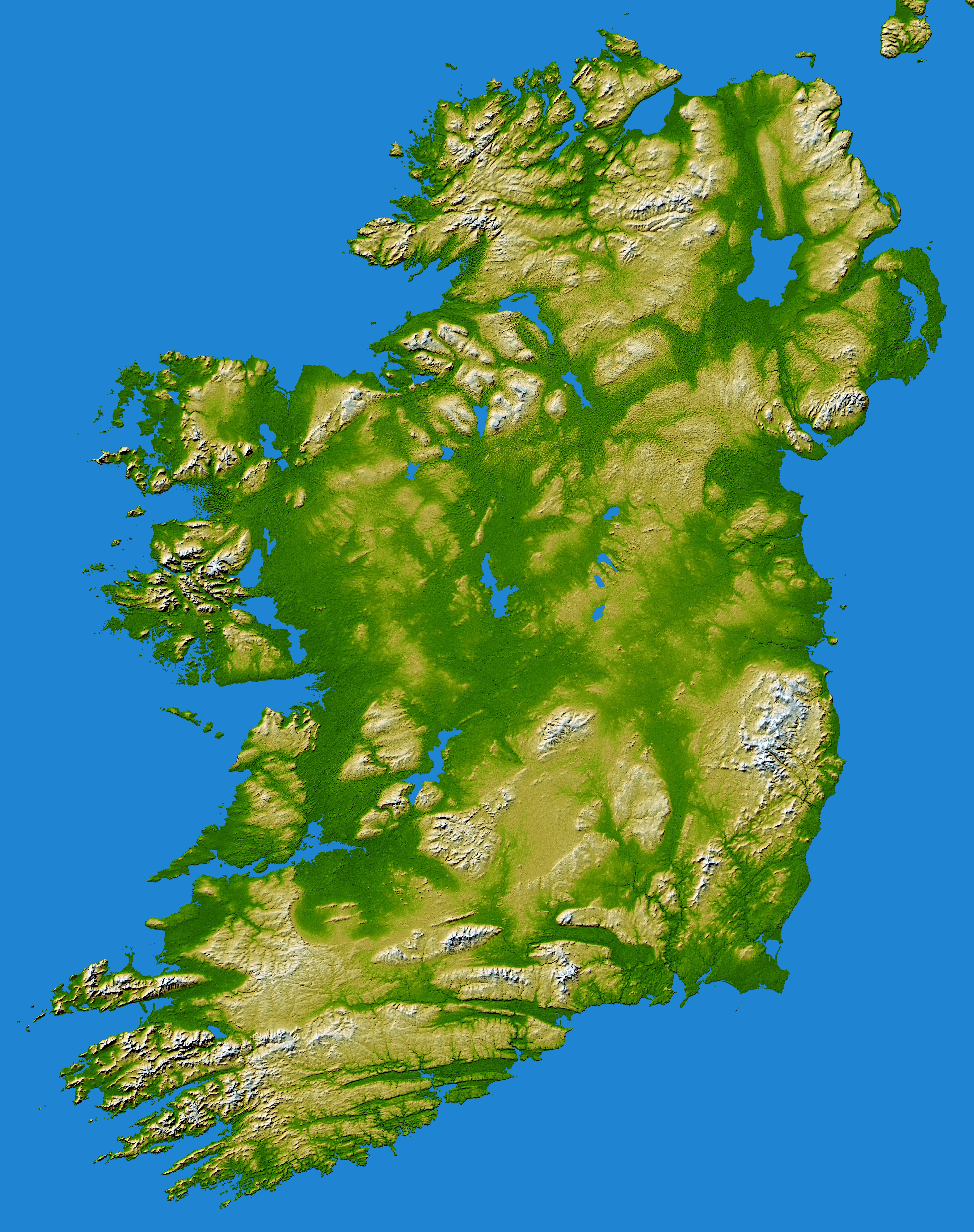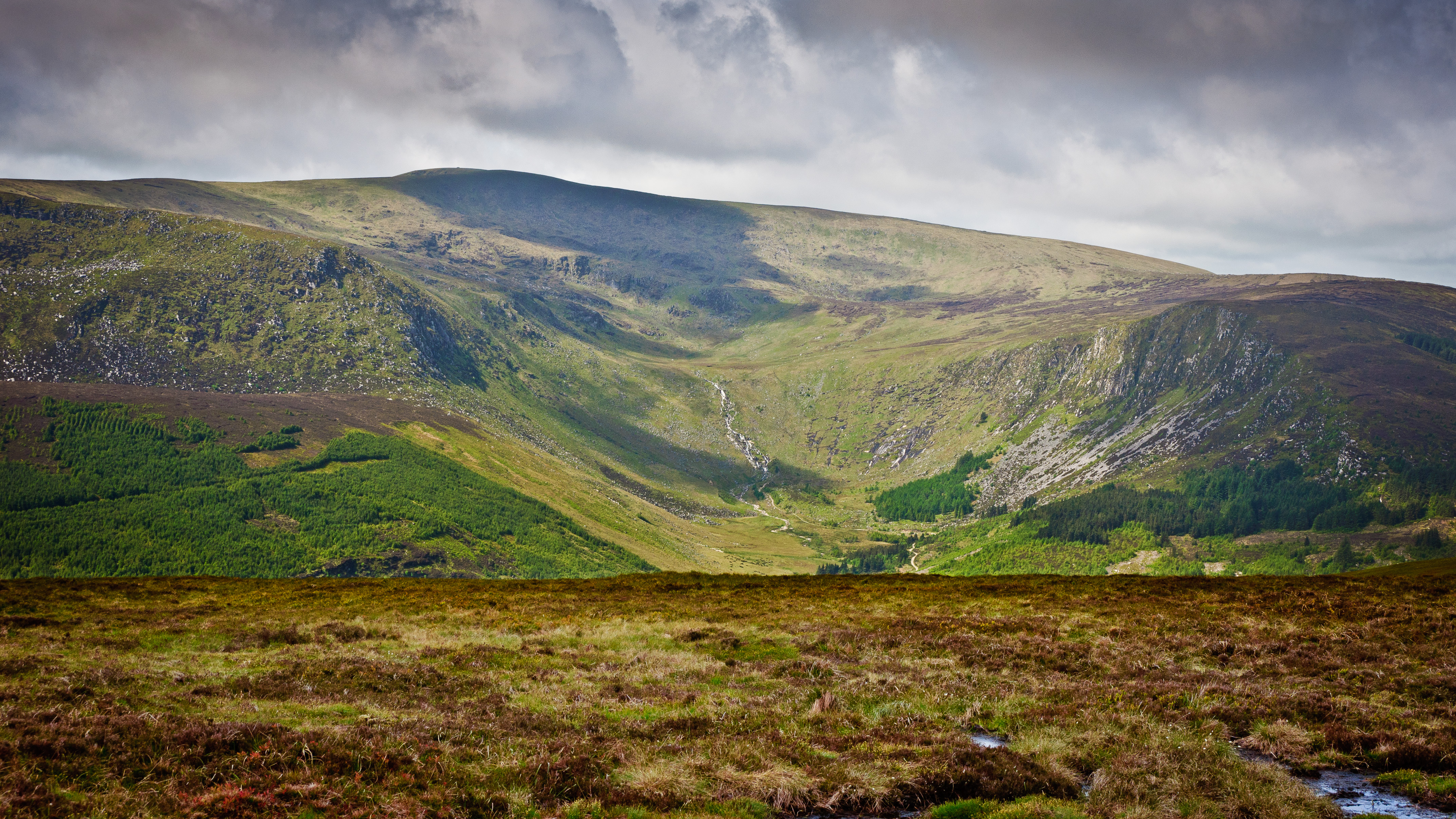|
Sugarloaf (West Wicklow)
Sugarloaf is a peak in west County Wicklow, Ireland that lies on the northern edge of the Glen of Imaal. With a topographical prominence, prominence of only , it is not listed in any of the Lists of mountains in Ireland, recognised categories of mountains in Ireland, and is a subsidiary summit of Lobawn , to the north. Sugarloaf should not be confused with the better known Great Sugar Loaf , and the Little Sugar Loaf in the northeastern section of the Wicklow Mountains. __NOTOC__ Bibliography * * See also *Wicklow Way *Wicklow Mountains *Lists of mountains in Ireland *List of mountains of the British Isles by height *List of Hewitt mountains in England, Wales and Ireland References External linksMountainViews: The Irish Mountain Website Sugarloaf (West Wicklow) the largest database of British Isles mountains ("DoBIH") [...More Info...] [...Related Items...] OR: [Wikipedia] [Google] [Baidu] |
Lobawn
Lobawn () at , is the 182nd–highest peak in Ireland on the Arderin scale, and the 219th–highest peak on the Vandeleur-Lynam scale.Mountainviews, (September 2013), "A Guide to Ireland's Mountain Summits: The Vandeleur-Lynams & the Arderins", Collins Books, Cork, Lobawn has a flat boggy summit plateau with a "war department" concrete post to mark the top. Lobawn lies in the west section of the Wicklow Mountains, in County Wicklow, Ireland, and has a subsidiary summit called Sugarloaf (West Wicklow) . Both Lobawn and the Sugarloaf border the Glen of Imaal, and their summits lie close to the actual boundaries of the Glen of Imaal Military Artillery Firing Range. Bibliography * * * See also *Wicklow Way *Wicklow Mountains *Lists of mountains in Ireland *List of mountains of the British Isles by height *List of Hewitt mountains in England, Wales and Ireland References External linksMountainViews: The Irish Mountain Website Lobawn [...More Info...] [...Related Items...] OR: [Wikipedia] [Google] [Baidu] |
Glen Of Imaal
The Glen of Imaal ( or ; ) is a remote glen in the western Wicklow Mountains in Republic of Ireland, Ireland. It is ringed by the Lugnaquilla massif and its foothills, including Table Mountain, County Wicklow, Table Mountain and Keadeen Mountain, Keadeen. Much of the valley is used by the Irish Army as an artillery firing range, and hill walking, hill walkers who use the glen are advised to observe the times of firing practice and to refrain from picking up strange objects. The Glen of Imaal is the subject of an eponymously titled Irish folk song, and also the place of origin of the eponymous dog breed, the Glen of Imaal Terrier. History Early history The Glen of Imaal is named after the Uí Máil, who dominated the kingship of Leinster in the 7th century. They were ousted by the Uí Dúnlainge from the lowlands of what later became County Kildare, and from that time until the early 13th century were located along the western foothills of the Wicklow mountains. The valley appea ... [...More Info...] [...Related Items...] OR: [Wikipedia] [Google] [Baidu] |
MountainViews Online Database
In these lists of mountains in Ireland, those within Northern Ireland, or on the Republic of Ireland – United Kingdom border, are marked with an asterisk, while the rest are within the Republic of Ireland. Where mountains are ranked by height, the definition of the topographical prominence used to classify the mountain (e.g. the change in elevation required between neighbouring mountains), is noted. In British definitions, a height of is required for a mountain, whereas in Ireland, a lower threshold of is sometimes advocated. The lowest minimum prominence threshold of any definition of an Irish mountain is (e.g. the Lists of mountains and hills in the British Isles#Vandeleur-Lynams, Vandeleur-Lynam), however most definitions, including the International Climbing and Mountaineering Federation (UIAA) criteria, do not consider prominences below as being mountains (e.g. must at least be an Lists of mountains and hills in the British Isles#Arderins, Arderin or a Lists of mounta ... [...More Info...] [...Related Items...] OR: [Wikipedia] [Google] [Baidu] |
County Wicklow
County Wicklow ( ; ) is a Counties of Ireland, county in Republic of Ireland, Ireland. The last of the traditional 32 counties, having been formed as late as 1606 in Ireland, 1606, it is part of the Eastern and Midland Region and the Provinces of Ireland, province of Leinster. It is bordered by the Irish Sea to the east and the counties of County Wexford, Wexford to the south, County Carlow, Carlow to the southwest, County Kildare, Kildare to the west, and South Dublin and Dún Laoghaire–Rathdown to the north. Wicklow is named after its county town of Wicklow, which derives from the name (Old Norse for "Vikings' Meadow"). Wicklow County Council is the Local government in the Republic of Ireland, local authority for the county, which had a population of 155,258 at the 2022 census of Ireland, 2022 census. Colloquially known as the "Garden of Ireland" for its scenerywhich includes extensive woodlands, nature trails, beaches, and ancient ruins while allowing for a multitude of w ... [...More Info...] [...Related Items...] OR: [Wikipedia] [Google] [Baidu] |
Wicklow Mountains
The Wicklow Mountains (, archaic: '' Cualu'') form the largest continuous upland area in Ireland. They occupy the whole centre of County Wicklow and stretch outside its borders into the counties of Dublin, Wexford and Carlow. Where the mountains extend into County Dublin, they are known locally as the Dublin Mountains (''Sléibhte Bhaile Átha Cliath''). The highest peak is Lugnaquilla at . The mountains are primarily composed of granite surrounded by an envelope of mica-schist and much older rocks such as quartzite. They were pushed up during the Caledonian orogeny at the start of the Devonian period and form part of the Leinster Chain, the largest continuous area of granite in Ireland and Britain. The mountains owe much of their present topography to the effects of the last ice age, which deepened the glens and created corrie and ribbon lakes. Copper and lead have been the main metals mined in the mountains and a brief gold rush occurred in the 18th century. Several major ... [...More Info...] [...Related Items...] OR: [Wikipedia] [Google] [Baidu] |
Ordnance Survey Ireland
Ordnance Survey Ireland (OSI; ) was the national mapping agency of the Republic of Ireland. It was established on 4 March 2002 as a body corporate. It was the successor to the former Ordnance Survey of Ireland. It and the Ordnance Survey of Northern Ireland (OSNI) were themselves the successors to the Irish operations of the British Ordnance Survey. OSI was part of the Irish public service. OSI was headquartered at Mountjoy House in the Phoenix Park in Dublin, which had previously been the headquarters of the British Ordnance Survey in Ireland until 1922. In March 2023, the Ordnance Survey was dissolved and its functions transferred to a new body called Tailte Éireann, which also incorporates the Property Registration Authority and the Valuation Office. Organisation Under the Ordnance Survey Ireland Act 2001, the Ordnance Survey of Ireland was dissolved and a new corporate body called Ordnance Survey Ireland was established in its place. OSI was an autonomous corporate bo ... [...More Info...] [...Related Items...] OR: [Wikipedia] [Google] [Baidu] |
Sugarloaf (West Wicklow)
Sugarloaf is a peak in west County Wicklow, Ireland that lies on the northern edge of the Glen of Imaal. With a topographical prominence, prominence of only , it is not listed in any of the Lists of mountains in Ireland, recognised categories of mountains in Ireland, and is a subsidiary summit of Lobawn , to the north. Sugarloaf should not be confused with the better known Great Sugar Loaf , and the Little Sugar Loaf in the northeastern section of the Wicklow Mountains. __NOTOC__ Bibliography * * See also *Wicklow Way *Wicklow Mountains *Lists of mountains in Ireland *List of mountains of the British Isles by height *List of Hewitt mountains in England, Wales and Ireland References External linksMountainViews: The Irish Mountain Website Sugarloaf (West Wicklow) the largest database of British Isles mountains ("DoBIH") [...More Info...] [...Related Items...] OR: [Wikipedia] [Google] [Baidu] |
Topographical Prominence
In topography, prominence or relative height (also referred to as autonomous height, and shoulder drop in US English, and drop in British English) measures the height of a mountain or hill's summit relative to the lowest contour line encircling it but containing no higher summit within it. It is a measure of the independence of a summit. The key col ("saddle") around the peak is a unique point on this contour line and the ''parent peak'' (if any) is some higher mountain, selected according to various criteria. Definitions The prominence of a peak is the least drop in height necessary in order to get from the summit to any higher terrain. This can be calculated for a given peak in the following manner: for every path connecting the peak to higher terrain, find the lowest point on the path; the ''key col'' (or ''highest saddle'', or ''linking col'', or ''link'') is defined as the highest of these points, along all connecting paths; the prominence is the difference between the ... [...More Info...] [...Related Items...] OR: [Wikipedia] [Google] [Baidu] |
Lists Of Mountains In Ireland
In these lists of mountains in Ireland, those within Northern Ireland, or on the Republic of Ireland – United Kingdom border, are marked with an asterisk, while the rest are within the Republic of Ireland. Where mountains are ranked by height, the definition of the topographical prominence used to classify the mountain (e.g. the change in elevation required between neighbouring mountains), is noted. In British definitions, a height of is required for a mountain, whereas in Ireland, a lower threshold of is sometimes advocated. The lowest minimum prominence threshold of any definition of an Irish mountain is (e.g. the Lists of mountains and hills in the British Isles#Vandeleur-Lynams, Vandeleur-Lynam), however most definitions, including the International Climbing and Mountaineering Federation (UIAA) criteria, do not consider prominences below as being mountains (e.g. must at least be an Lists of mountains and hills in the British Isles#Arderins, Arderin or a Lists of mounta ... [...More Info...] [...Related Items...] OR: [Wikipedia] [Google] [Baidu] |
Great Sugar Loaf
Great Sugar Loaf () at , is the 404th–highest peak in Ireland on the Arderin scale, however, being below 600 m it does not rank on the Vandeleur-Lynam or Hewitt scales.Mountainviews, (September 2013), "A Guide to Ireland's Mountain Summits: The Vandeleur-Lynams & the Arderins", Collins Books, Cork, The mountain is in the far northeastern section of the Wicklow Mountains, in Ireland, and overlooks the village of Kilmacanogue. The profile of the mountain means it can be mistaken for a dormant volcano. It owes its distinctive shape, however, to the erosion-resistant metamorphosed deep-sea sedimentary deposit from which its quartzite composition was derived. Naming According to Irish academic Paul Tempan, the term "sugarloaf" is widely applied in Britain and Ireland to hills of conical form, in much the same way that the name pain de sucre is used in France. Tempan also notes that there is a widespread misconception that the term refers to a kind of bread, when it refers in ... [...More Info...] [...Related Items...] OR: [Wikipedia] [Google] [Baidu] |
Little Sugar Loaf
Little Sugar Loaf () is a hill in the far northeastern sector of the Wicklow Mountains in Ireland. It does not have the elevation to rank on Arderin, Hewitt, or Vandeleur-Lynam scales,Mountainviews, (September 2013), "A Guide to Ireland's Mountain Summits: The Vandeleur-Lynams & the Arderins", Collins Books, Cork, however, its prominence of ranks it as a Marilyn. The Little Sugar Loaf is situated northeastwards from the Great Sugar Loaf, but separated by the N11 dual carriageway. The northern side of Little Sugar Loaf directly overlooks the town of Bray; the eastern side (see photo) looks across the R761 between Bray and Greystones to the western slope of Bray Head. Little Sugar Loaf has a distinctive profile of a rocky double summit. Like the Great Sugar Loaf, it consists of Cambrian Period quartzite bedrock. Irish academic Paul Tempan notes that the Irish name ''Giolspar'' is likely a translation of the English "gilt spur", based on a record of a 12th-century trans ... [...More Info...] [...Related Items...] OR: [Wikipedia] [Google] [Baidu] |
Wicklow Way
The Wicklow Way () is a long-distance trail that crosses the Wicklow Mountains in Ireland. It runs from Marlay Park in the southern suburbs of Dublin through County Wicklow and ends in the village of Clonegal in County Carlow. It is designated as a long-distance trails in the Republic of Ireland, National Waymarked Trail by the Irish Sports Council and is trail blazing, waymarked by posts with a yellow "walking man" symbol and a directional arrow. Typically completed in 5–7 days, it is one of the busiest of Ireland's National Waymarked Trails, with up to 24,000 people a year walking the most popular sections. The Way is also used regularly by a number of fell running, mountain running competitions. The trail follows forest tracks, mountain paths, boreens and quiet country roads. Mountains, upland lakes and steep-sided glacial valleys make up the terrain of the initial northern sections of the Way before giving way to gentler rolling foothills in the latter southern sections ... [...More Info...] [...Related Items...] OR: [Wikipedia] [Google] [Baidu] |




